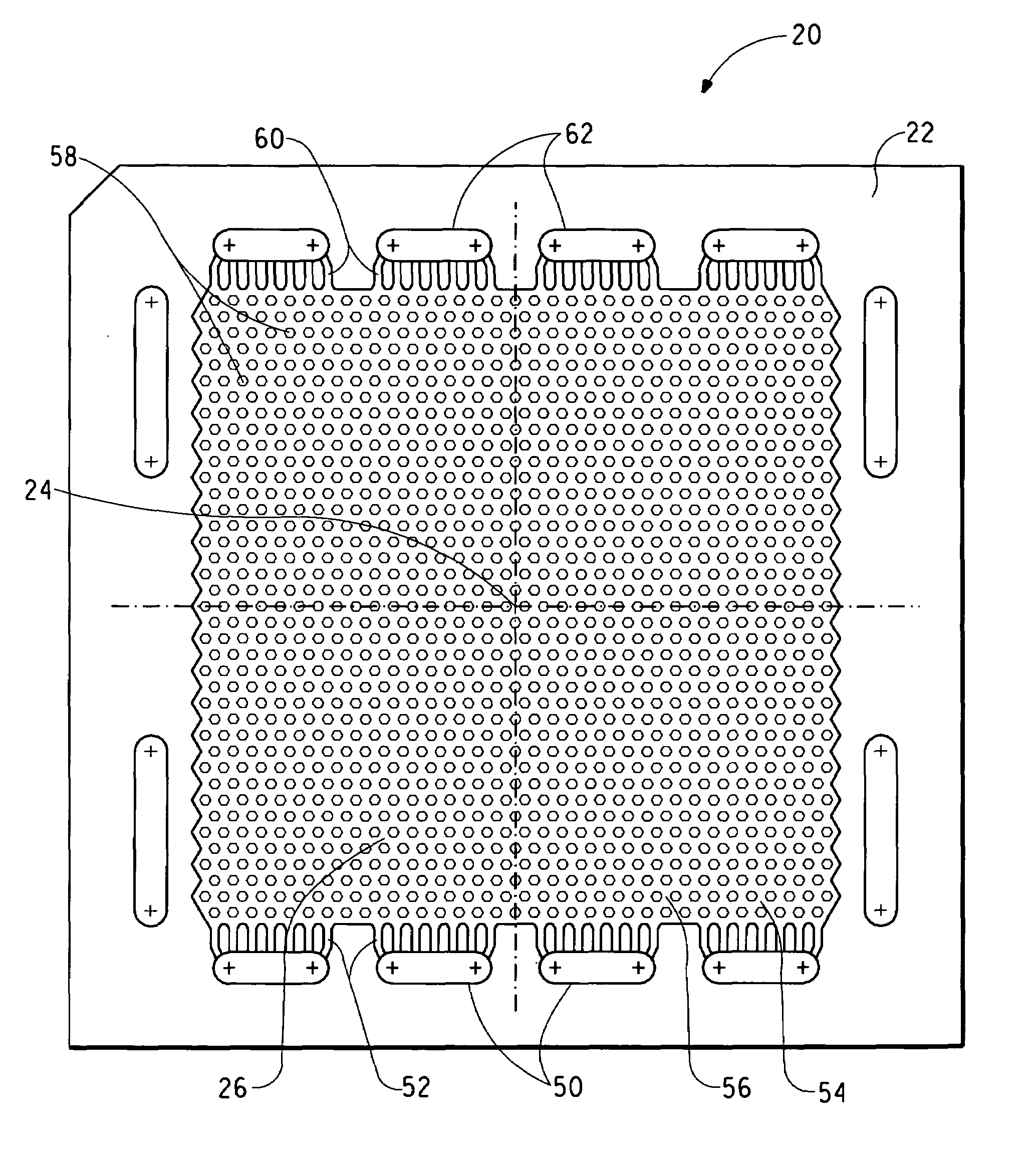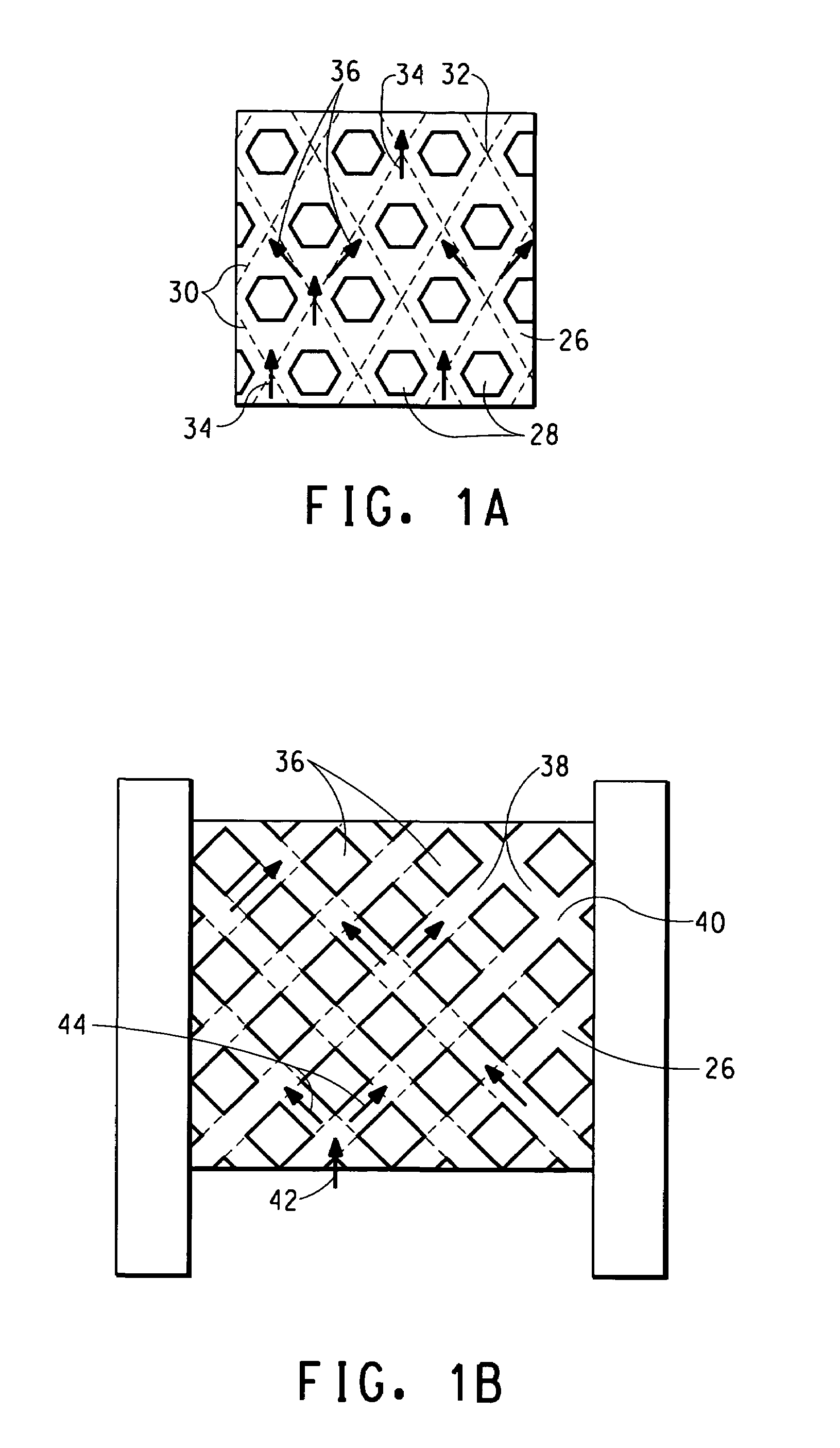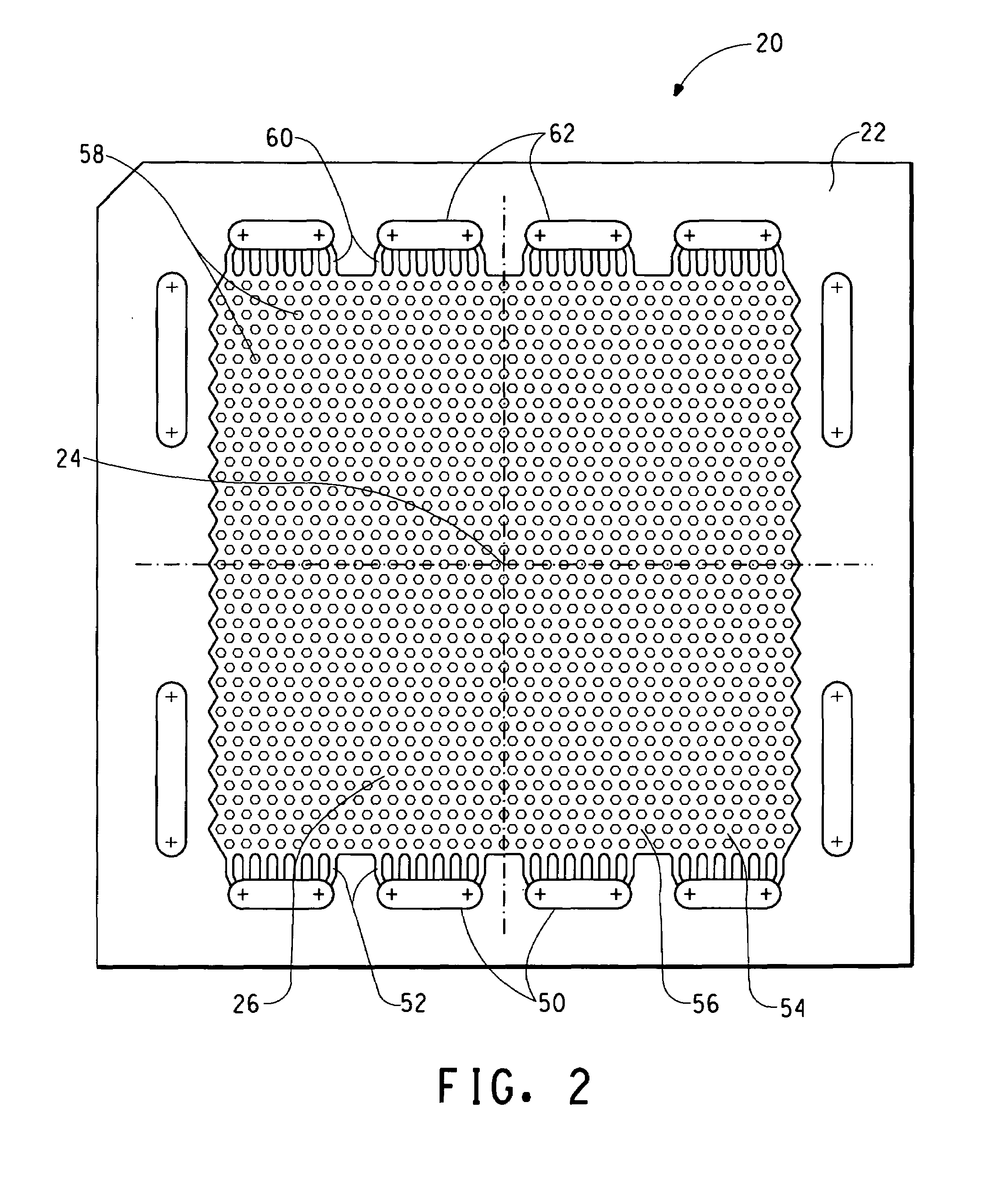Fluid flow-fields for electrochemical devices
a technology of electrochemical devices and fluid flow fields, which is applied in the direction of electrochemical generators, cell components, cell component details, etc., can solve the problems of high pressure drop across the mea, poor removal of by-products and water, and insufficient fuel flow distribution, so as to improve flow distribution and by-product removal, the effect of optimizing the pressure drop
- Summary
- Abstract
- Description
- Claims
- Application Information
AI Technical Summary
Benefits of technology
Problems solved by technology
Method used
Image
Examples
Embodiment Construction
[0036]A typical fuel cell reactor may comprise a single-cell, or a multi-cell stack. In either case, the membrane / electrode assembly (MEA) comprising the proton-conducting membrane (the electrolyte) and the anode and cathode, is typically sandwiched between two highly (electrically) conductive flow field plates. The cathode and the anode typically comprise a porous backing made of an electrically conductive material, such as carbon paper, cloth or felt, and an electrocatalyst layer bonded to the porous backing. The electrocatalyst layers of each electrode comprise a mix of electrocatalyst particles and proton-conducting particles.
[0037]The flow field plate is made of an electrically conductive material, and is preferably made from non-porous nuclear grade carbon blocks. However, other conventional electrically conductive materials such as electrically-conductive polymers, corrosion resistant metals, and graphite / polymer composites are used to make the flow field plates. As seen in F...
PUM
| Property | Measurement | Unit |
|---|---|---|
| electrically conducting | aaaaa | aaaaa |
| shape | aaaaa | aaaaa |
| size | aaaaa | aaaaa |
Abstract
Description
Claims
Application Information
 Login to View More
Login to View More - R&D
- Intellectual Property
- Life Sciences
- Materials
- Tech Scout
- Unparalleled Data Quality
- Higher Quality Content
- 60% Fewer Hallucinations
Browse by: Latest US Patents, China's latest patents, Technical Efficacy Thesaurus, Application Domain, Technology Topic, Popular Technical Reports.
© 2025 PatSnap. All rights reserved.Legal|Privacy policy|Modern Slavery Act Transparency Statement|Sitemap|About US| Contact US: help@patsnap.com



